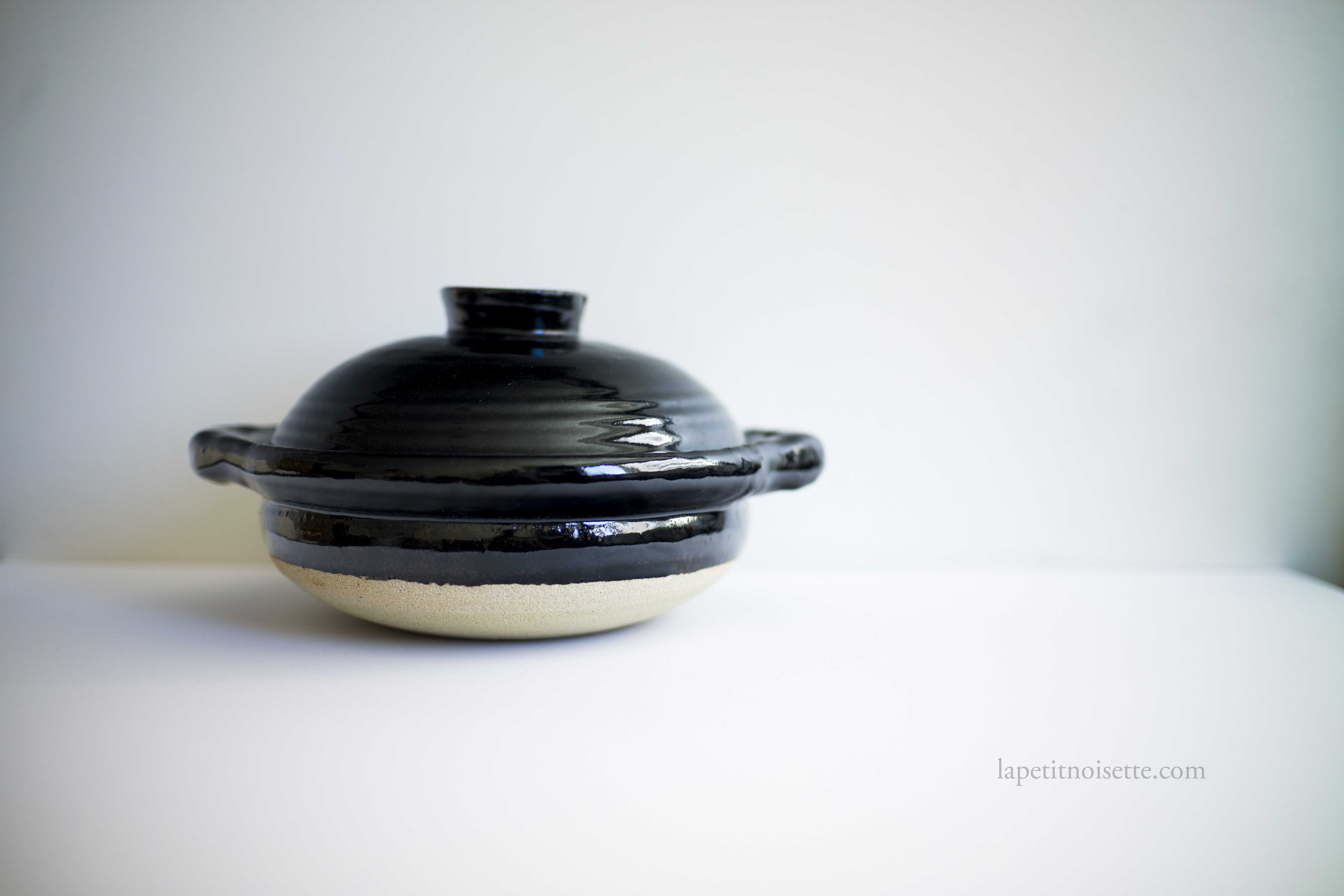
Nagatanien’s Kamado-san claypot rice cooker has always been my go to standard everyday rice cooker compared to that by Nakagawa Ippento or Nakagawa Isshiro due to its wide availability and lower cost. However, I’ve recently been able to source 2 claypots from Kobo Kiln that is also based in Iga (伊賀), that have completely blown me away. Whilst this blog seems to be getting more and more claypot reviews compared to food recipes, the following is an article on Kobo Kiln and its pot maker, Koji Shibamoto (柴本 耕志).
Also based in the city of Iga just like Nagatanien, Kobo Kiln makes a much smaller production of claypots largely due to the fact that it is a one man show run by Koji Shibamoto. In my opinions, the claypots made by him truly encapsulate the meaning of the word “artisan”.
Whilst claypots made by Nagatanien have been popularised across the international culinary world outside of Japan by entities such as SingleThread Farms and Toiro Kitchen, the attention to detail and quality of build of Kobo Kiln’s claypots in a side by side comparison makes you feel as though those made by Nagatanien are simply factory mass produced and just not very good quality. This is not to talk bad about Nagatanien’s claypots which I personally am a very big fan of, it’s just that their claypots are just pale in comparison to Kobo Kiln’s. I’ll elaborate more of that after introducing the Kiln.
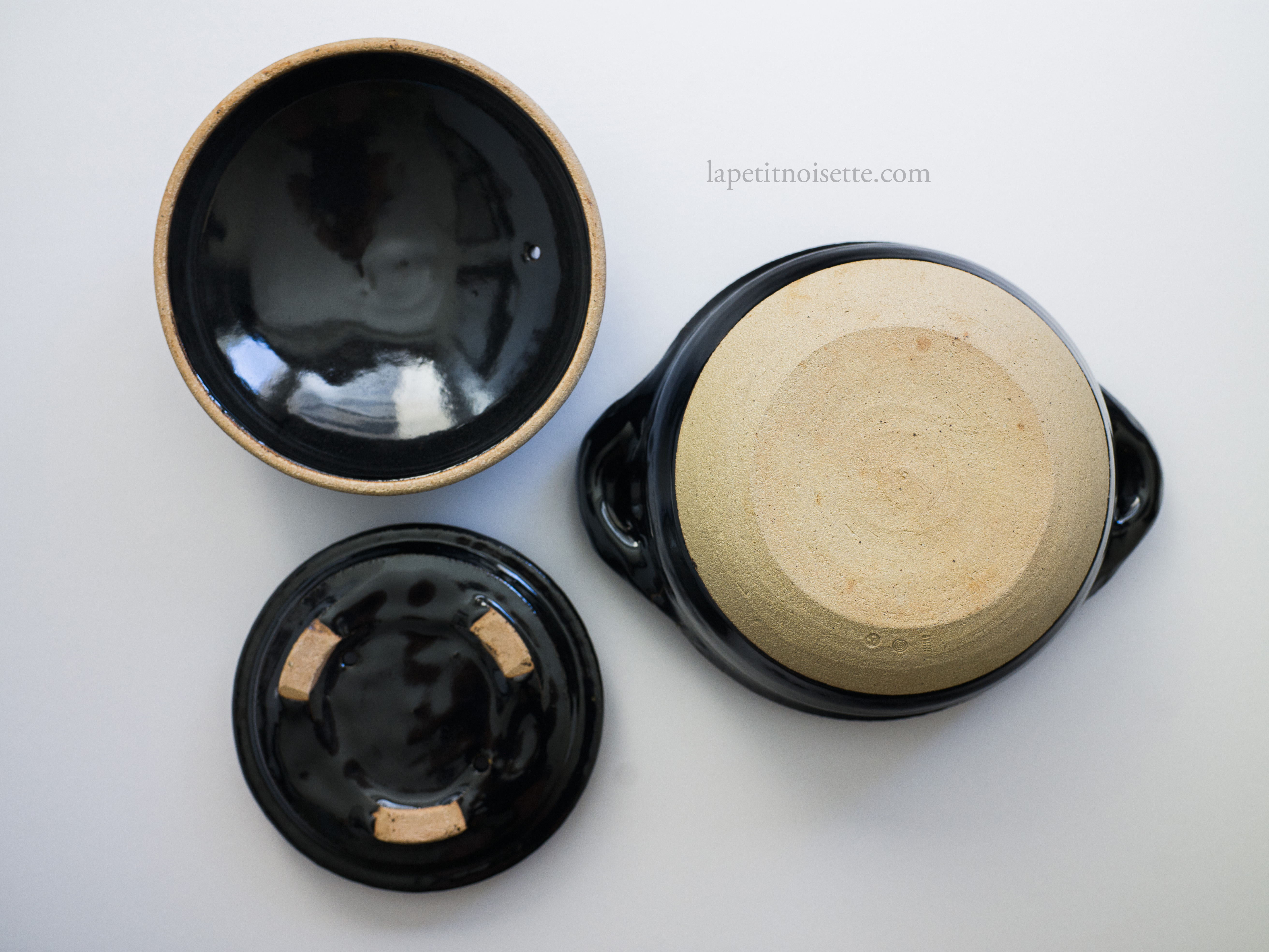
Born in 1954 in Aichi Prefecture, Koji Shibamoto actually worked at Nagatanien for 25 years before founding Kobo Kiln in 2010. In the same year, he was designated as an official craftsman of Iga-yaki pottery (伊賀焼伝統工芸師) by the Japanese Minister of Economy, Trade and Industry (経済産業大臣). Whilst working at Kobo Kiln, he then partnered with Azmaya (東屋), a company based in Tokyo that was established in 1997.
Whilst Kobo Kiln mainly manufactured claypots, Azmaya’s business goal was to partner with artisans around Japan to bring high quality rustic olden day Japanese kitchenware that have been made using traditional techniques and materials to the modern kitchen. As such, Azmaya is the main distributor of Kobo Kiln’s claypots. This is why if you flip over one of their claypots, you will not only see the logo of Kobo Kiln engraved on the underside of the pot, but also the logo of Azmaya right next to it. I personally am a big fan of the products curated by Azmaya.
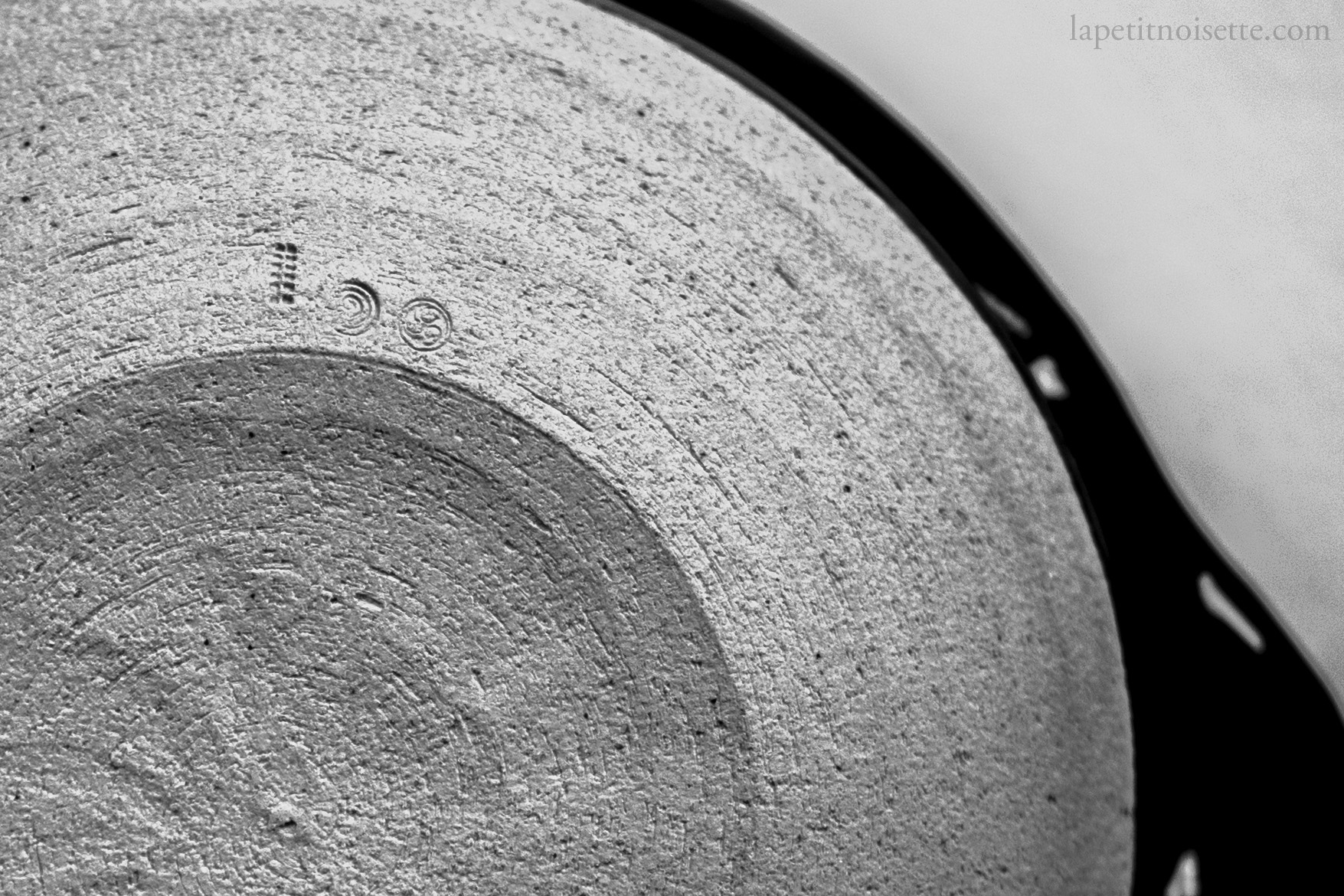
Back to the claypots however, due to the fact that Kobo Kiln’s claypots are also made from Iga soil, it also is categorised under the same classification of Iga-yaki pottery (伊賀焼), whilst also having the same benefits of other pots from Iga soil. The high amount of organic matter in this soil burns up when the claypots are fired in the kiln, which in turn leaves many small holes that trap air, dramatically improving its heat retention ability. In an interview with Koji Shibamoto, he states that the soil in Iga actually originates from lake Biwa (琵琶湖), and his pots are special because he uses two kinds of clay to mould his pots, specifically Frog Eyes clay (gairome/ガイロメ/蛙目粘土) that originates from the estuaries of the lake and Wood Knot clay (Kibushi/キブシ/木節) that originates from soil that has settle in the middle of the lake. Frog Eyes clay is a course and heavy clay that contains whitestones, which are said glow like frog eyes when wet. Conversely, Wood Knot clay is a fine grained clay that becomes sticky when wet and is said to contain a lot of brown coal, or lignite (亜炭/アタン), which is the lowest grade of coal due to the low amount of heat it produces when burned.
In terms of clay composition as well, Iga soil has also a low percentage of Feldspar (長石), which makes up around 41% of the earth’s crust and a much higher percentage in clay. Feldspar actually is a group of minerals that share the same formula of AB4O8 where A can either be K, Ca or Na (Potassium, Calcium or Sodium), and B can either be Si or Al (silicon or Aluminium). If you consider Feldspar to be a single mineral however, then you can consider it to be the most abundant mineral in the world. Due to the low percentage of feldspar in iga clay, it does not crack or scorch easily when exposed to a large flame. This sort of clay is rare as most modern day ceramics are made with clay that has been enriched with petalite in order to obtain the same fire resistant qualities. The harvesting of Iga clay is also much more labour intensive and thus more costly compared to petalite. For example, high quality Iga clay needs to be shifted in order to create a uniform texture by removing larger particles, lowering the yield to around 60% of its original weight.
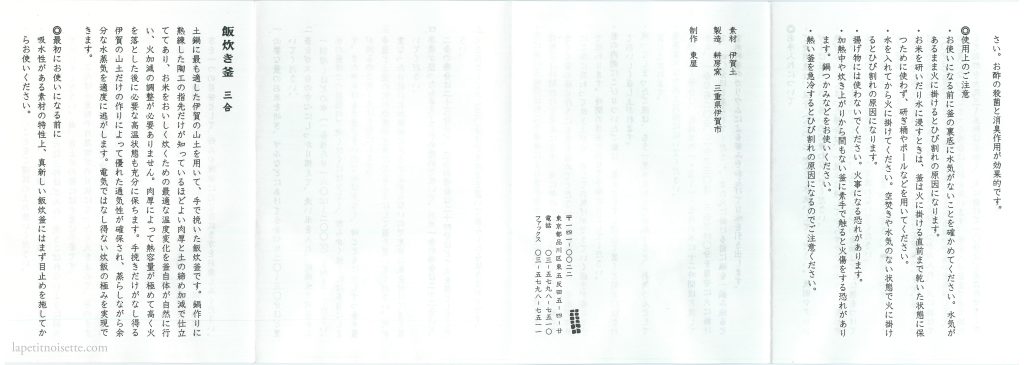
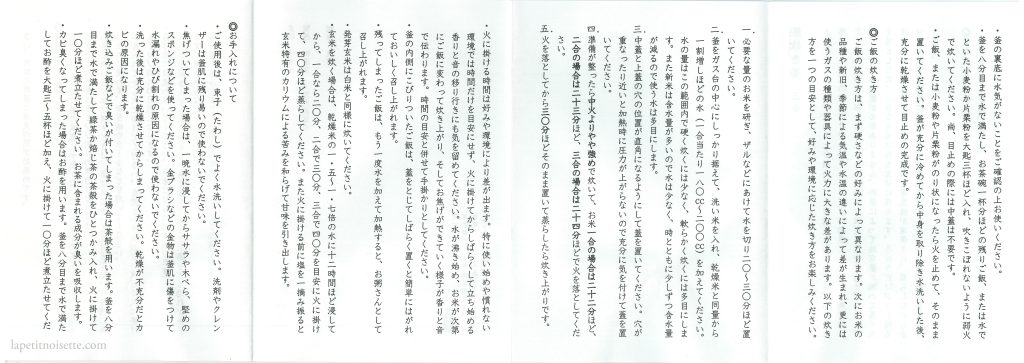
So why do I like this Kobo Kiln so much? Just like his compatriot Iga-yaki maker Nagatanien, Kobo Kiln’s rice cooker claypots have the same double lid design, with the second lid designed to trap steam and exert pressure on the first lid pushing it down. However, the difference in build between the two could not be more different. The inner lid from Kobo Kiln is made from a much thicker and more solid piece of clay compared to Nagatanien. In a side by side comparison, a 5 cup Nagatanien inner lid rice cooker is only 50g heavier compared to a 3 cup Kobo Kiln ricer cooker, bear in mind that a 5 cup rice cooker is almost twice the size compared to a 3 cup one. One of my main complaints for Nagatanien rice cookers is the grip on the inner lid, which has barely any place for you to grip on, let alone lift up using a piece of cloth when the inner lid is hot just after the rice has finished cooking. I always worried about dropping the inner lid because of this.
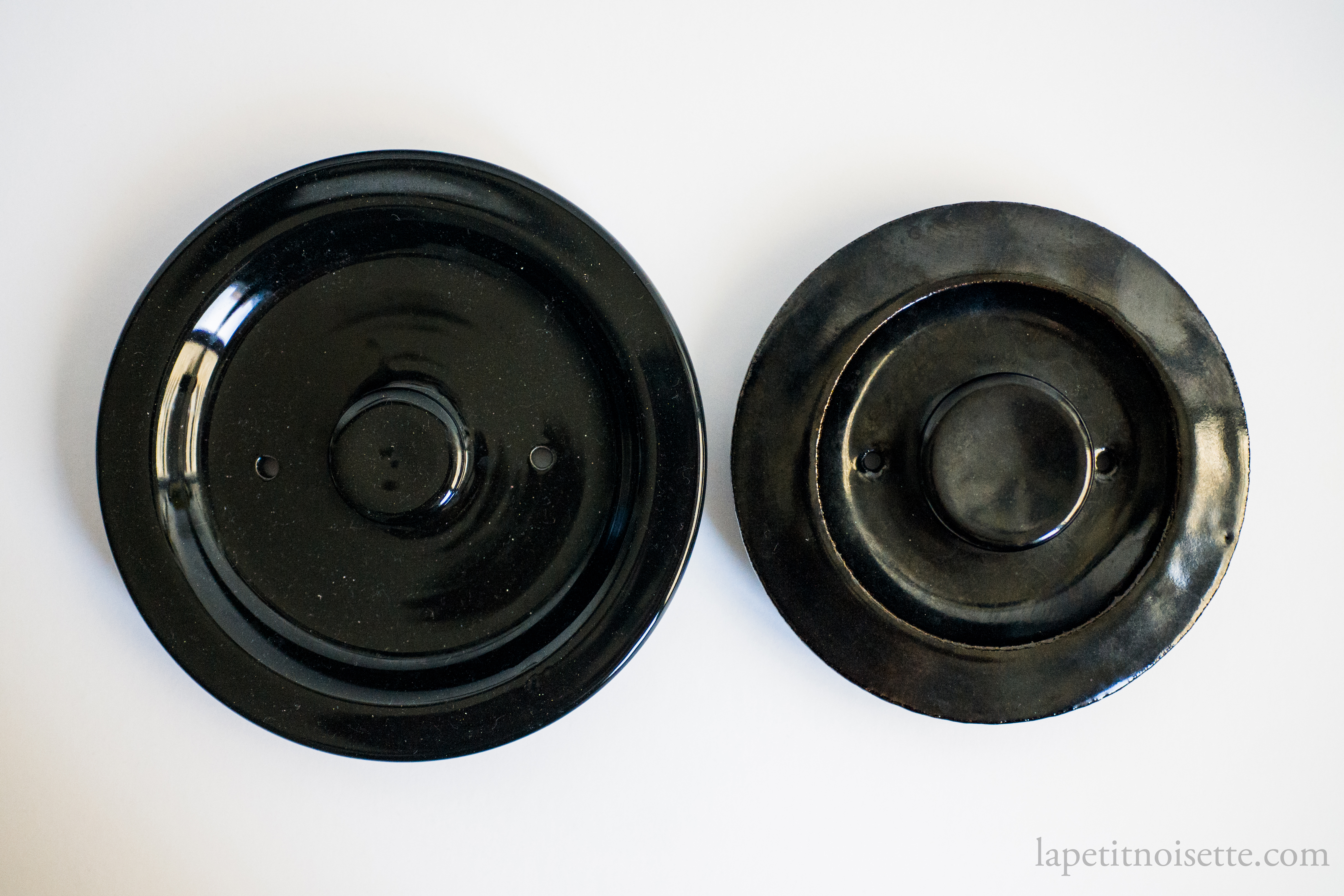
This same attention to detail and sturdiness applies to the whole pot in general. Just by lifting it up by its handle (or ears/持ち手/耳) you can already feel how much more heavily built Kobo Kiln’s claypots are. Even the handles themselves are not the uniform flat semi circles that are just stuck to the side like Nagatanien, but actual curved handles that are twice as thick and fused into the pot, as though they are made from the same piece of clay.
The handles also have grooves that let you grip onto them, and also have slight variation in shape and style which shows you that they’re actually hand shaped. If you look at Nagatanien’s pot handles, they are all the same uniform shape. So whilst they might be attached to the pot by hand, they appear to be stamped out from a mould of some sort (I might be wrong on this). I’ve also had many experiences of Nagatanien’s outer lid and pot chipping with use. Whilst I’ve never had the inner lid chip before, the outer lid seems to chip particularly easily, whilst the pot itself seems to chip on the inner lid. This seems to be because they’re made from a very thin layer of clay comparatively and are thus not very good quality.
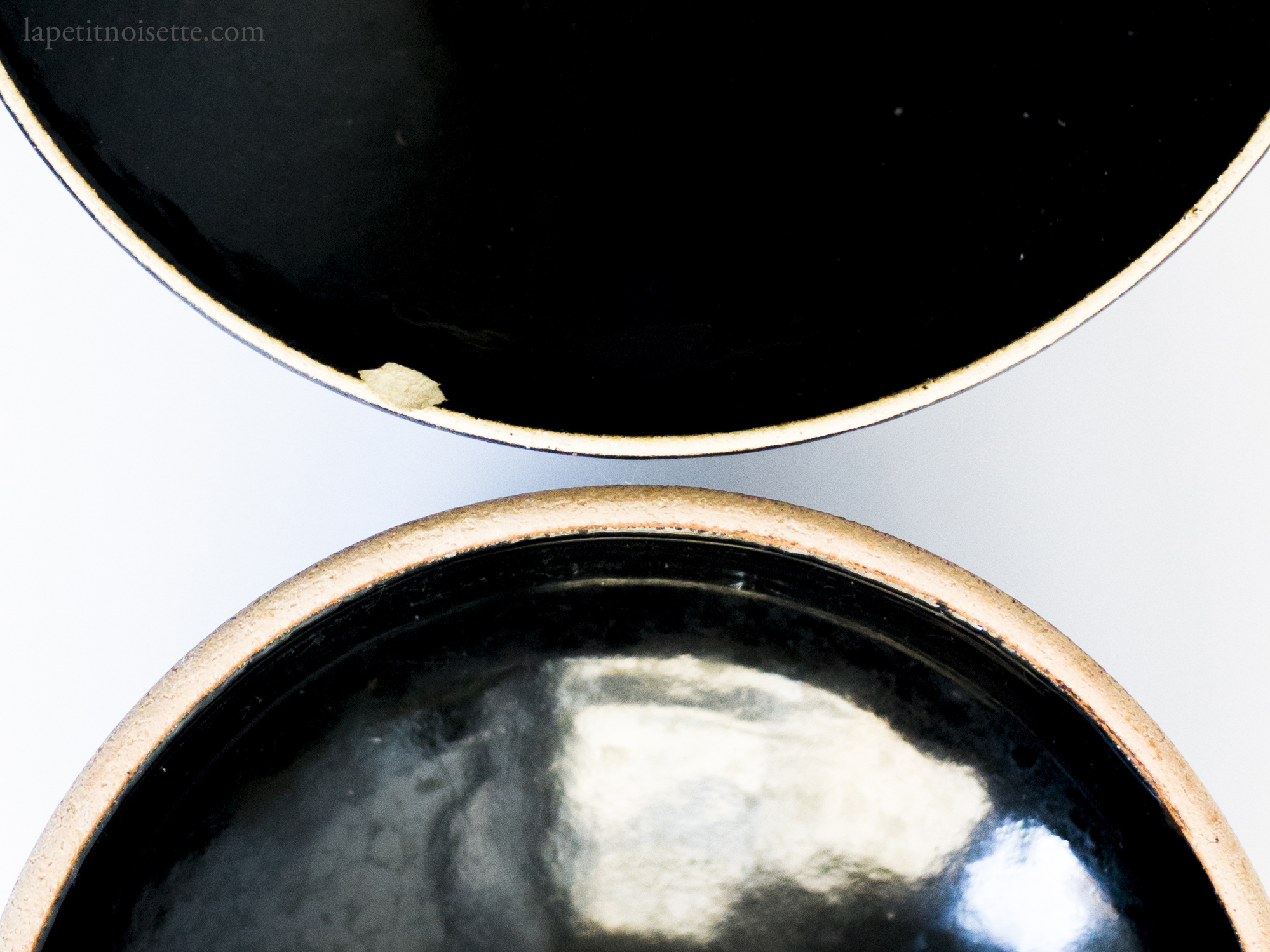
The pot itself is also prone to chipping and it was surprising to me when I saw other restaurants in Japan that use his pots also having the same chips at the exact same spot, which to me indicates that these pots all have the same weak points on them. It seems like the more use they get the more brittle they become.
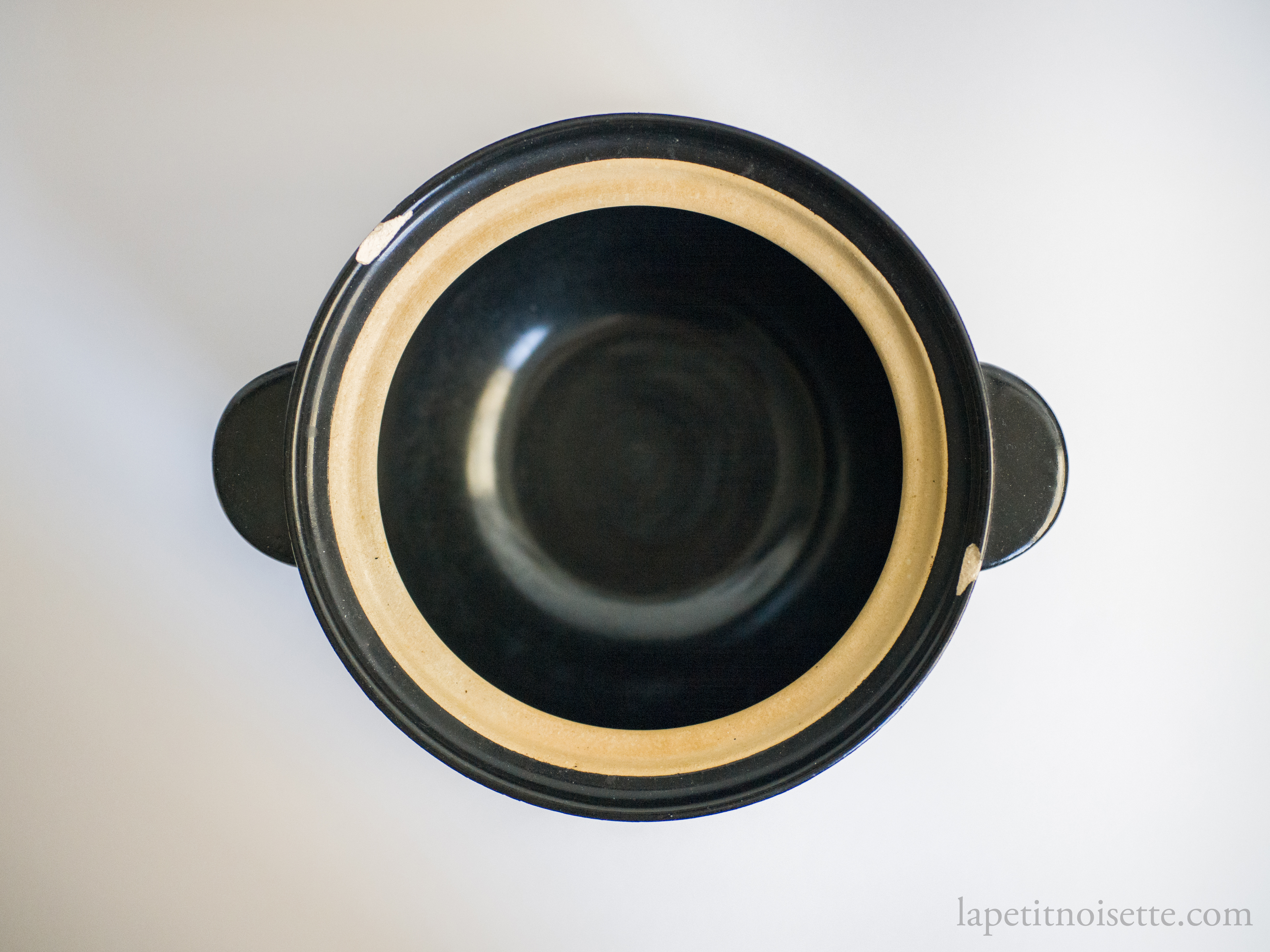
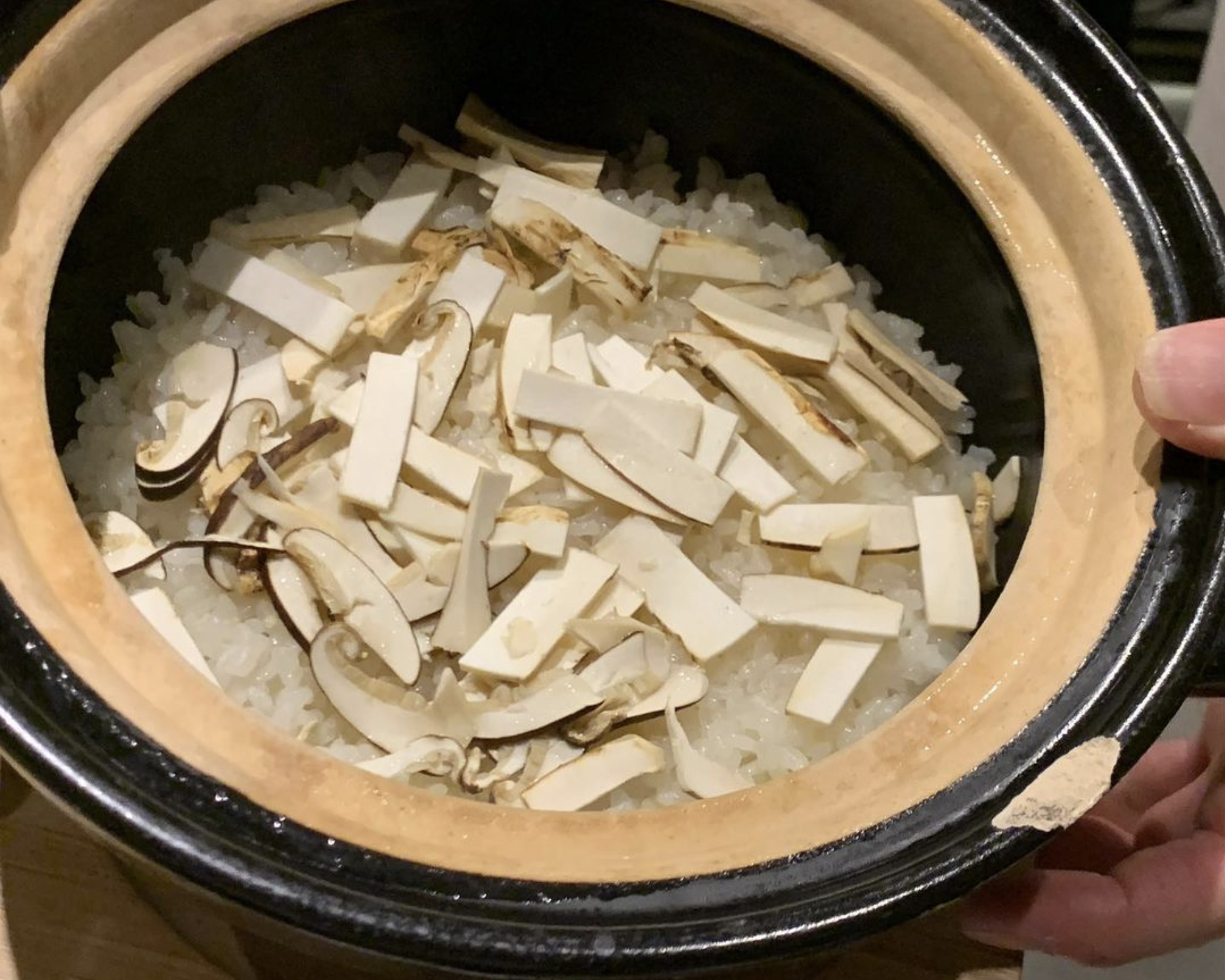
This then ties on to my next point regarding the clay used to make the pot. Whilst both makers use clay from Iga, the surface texture of the two couldn’t be more different. When it comes to unglazed surfaces, the texture of the exposed clay in Nagatanien’s pots are smooth and uniform, whilst the ones from Kobo Kiln are rough and uneven, giving it a more rustic feel. I suspected that this difference in texture has also something to do with why Kobo Kiln pots are more heavily built.
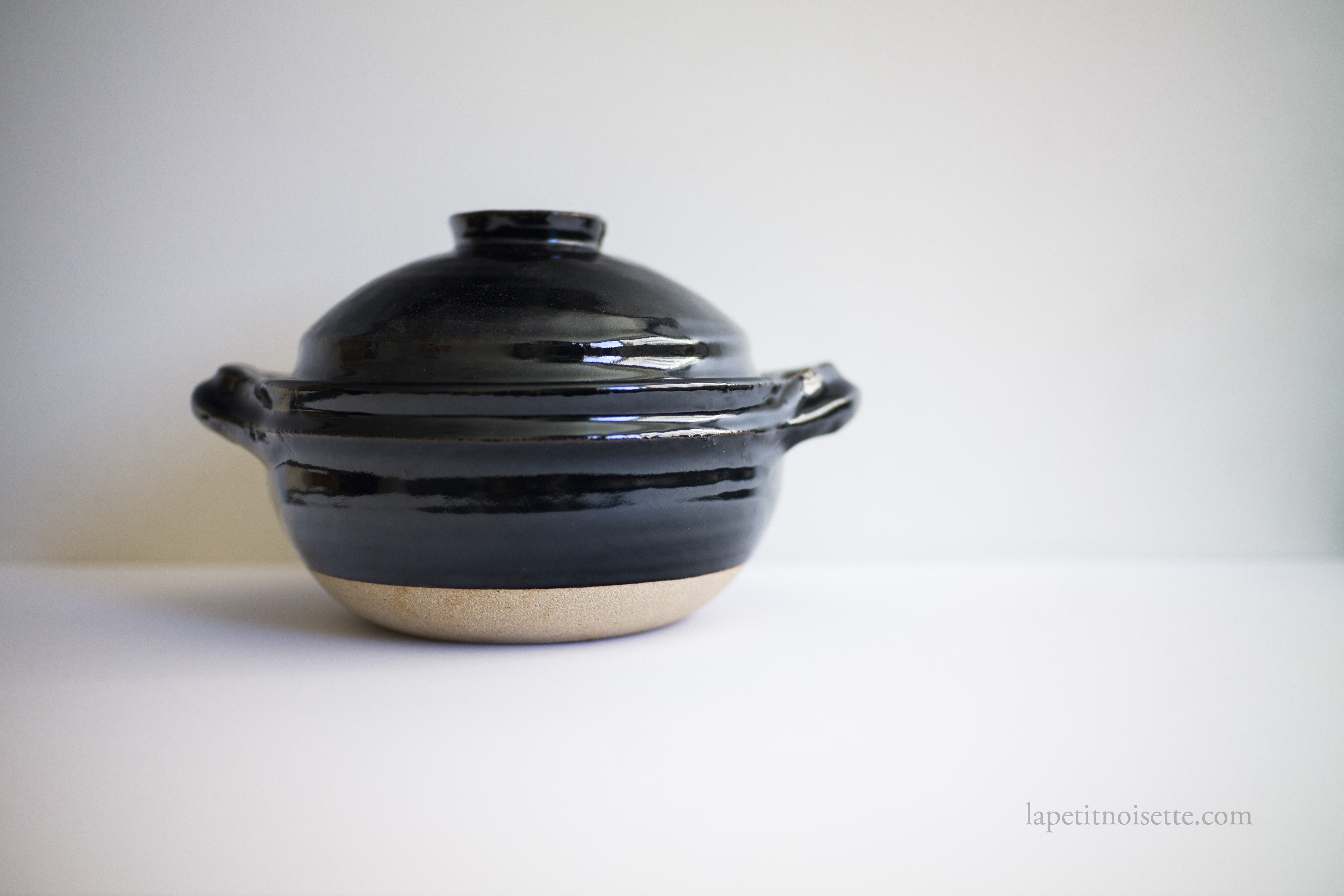
So what are the downsides of this pot compared to Nagatanien? I’ve come to notice that Kobo Kiln’s claypots have a much higher water absorption rate compared to Nagatanien. For example, after washing Nagatanien’s claypot, I usually allow it to air dry for a single day (at around a humidity of 25%) before storing it away with the double lid placed back on. If I do the same for Kobo Kiln’s claypots and open the lids the next day, the inner surface of the pot will be covered with droplets of water that have condensed out of the clay overnight. In fact, I have to leave it to dry for 3 days before all the water absorbed into the clay evaporates out. This does not affect the rice cooking in any way, even if you cook rice in it the day after before it dries out. The only hassle is that it is hard to store away with the lids unless you let it dry out for 3 days, if not there is a danger of mold growth.
There’s also exists in Japanese culture, an for the growth in aesthetic value of a claypot with use, with the most common example given being the appearance of small cracks in the claypot with use called kannyu* (貫入/かんにゅう) and the black burn marks at the bottom of the claypot. Kannyu, which directly translates to intrusions or penetrations, occur due to the differences in the rate of expansion and contraction between the pot and glaze during cooling, with the glaze cooling faster and contracting, which causes the glaze to crack slightly. These cracks do not run deep and thus are not signs of damage to the pot. If anything they are a sign that your pot is made from pure clay as pellite, the most common additive to claypots, gives the pot strength as it has a low coefficient of expansion and thus does not swell when heated. Whilst this makes for a more solid pot, it also prevents the pot from “breathing” and thus the glaze will not crack and your pot will not develop the beautiful kannyu. From my personal experience, the most you use the claypot over and over again, not only does the kannyu develop, but the pot seems to heat up quicker and quicker, which seems to be everyone’s experience, though my hunch is that these claypots also becomes more brittle and more prone to chipping with use.

Back to the comparison, Kobo Kiln’s clay pots seem to develop a lot more kannyu compared to Nagatanien, especially on the inner surface. Again to emphasise, these claypots are not signs of damage and do not affect the performance of the pot. They are a natural part of claypots. That being said, The inner surface of my Kobo Kiln claypot has a tiny hole where the inner glaze has flaked off, exposing the unglazed clay underneath, about half a millimeter in size. This has never happened to me when using Nagatanien’s claypots. Whilst a large amount of glaze flaking off is definitely a major problem, this little crack is not a problem, but is worth mentioning for those of you who are perfectionists.
As usual, the care instructions for these claypots are the same as Nagatanien. They are only compatible with gas or charcoal stoves and not induction cookers or hot plates. To prevent water from leaking through the claypot, remember to always seal/season (目止め作業) your claypot before using it. This can be done by cooking plain rice porridge or a mixture of cornstarch and water in it for the first time until a paste is formed. Allow the paste to cool for an hour before washing it out and drying the claypot.
The recipe for cooking rice is also the same: cook on medium-high heat until you see steam coming from the top of the outer lid which takes around 17 to 20 minutes. Continue cooking at the same heat for another minute or two before switching off the heat. Allow to continue cooking with the residual heat for 20 minutes before serving. The 20 minutes it takes for steam to start puffing from the outer lid is a good indication if the flame you are using is too high or too low. If it starts puffing in 10 to 15 minutes, you’re using too high heat, and there is a danger of the underside of your pot blackening. Once or twice is alright, just use lower heat next time. If it takes more than 20 minutes, the heat you are using is too low. If you leave rice in the claypot overnight, it might start to smell as the rice goes off and sooner or later mold will grow. The same goes if you close the lids and store it away before it fully dries. To get rid of unwanted smells, fill up the claypot to 80% of its maximum capacity with a handful of tea leaves and bring to a boil. To get rid of mold growth, replace the tea leaves with 5 tablespoons of rice vinegar.
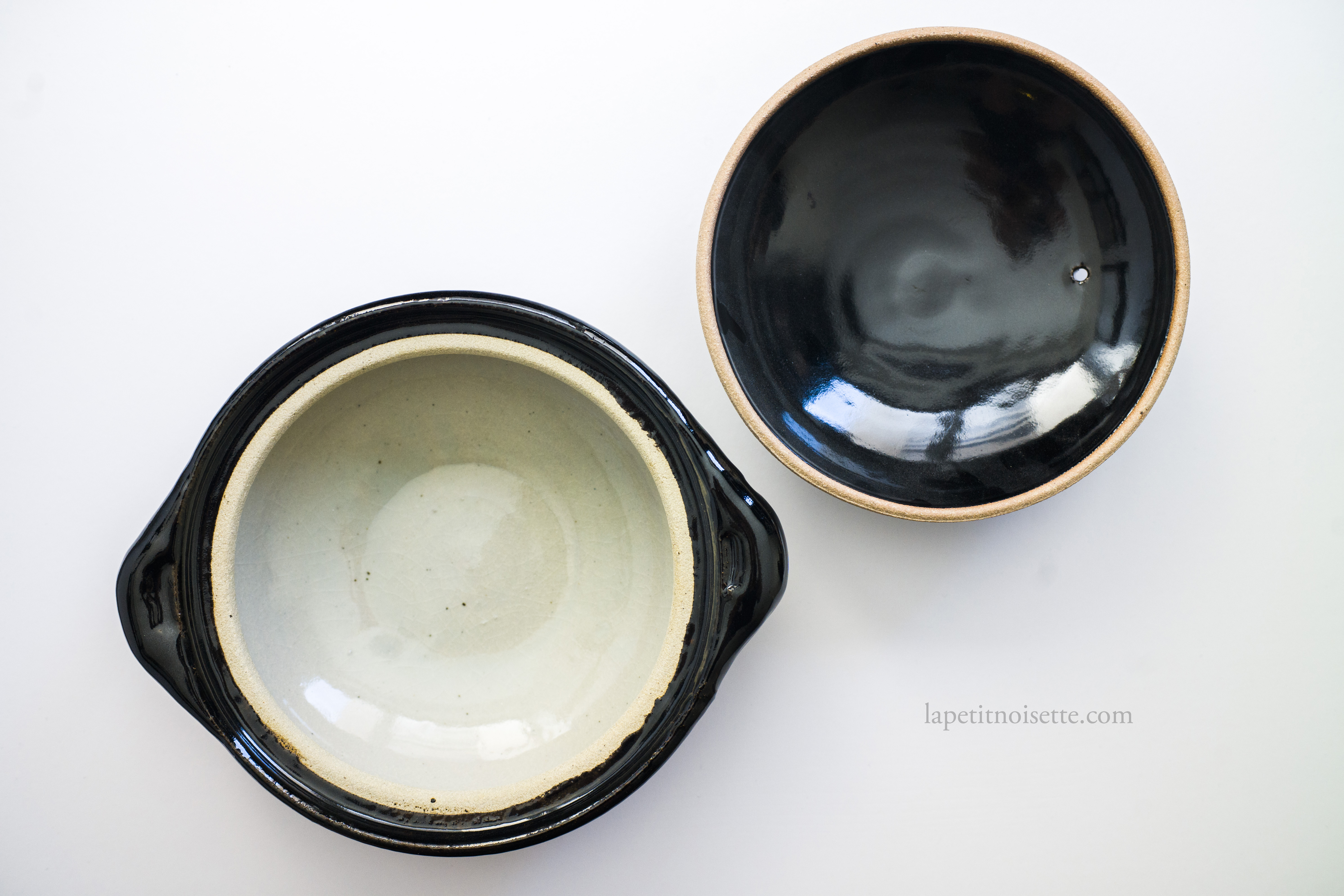
Other than his 2 lid rice cooker, he also produces a flatter and lighter clay pot for soups and stews called an ofuku-nabe (於福鍋). What I like about the ofuku-nabe is its depth, which is not too deep compared to many other claypots, allowing you to submerge your ingredients under the sauce or soup but not completely disappear. Furthermore, the white inner glaze of the ofuku-nabe is absolutely stunning, contrasting nicely with the dark kannyu that develop with use. He also produces a suribachi (擂鉢) grinding bowl and surikogi (擂粉木) pestle in collaboration with Azmaya that is made from Iga soil and sasho pepper wood. From a built perspective they are much more solid compared to your typical suribachi given that they are made from Iga soil but as we don’t place a suribachi over a flame, there really isn’t a need to buy one made from Iga soil. The suribachi is aesthetically pleasing as it is covered in a black candy glaze, whilst the surikogi has a beautiful finishing touch which is a kyoto kumihimo braid (組紐/くみひも) attached to the handle end of it for you to hang it from, almost making it too pretty to be used. As with his claypots, his seal and Azmaya’s seal can be found imprinted on the bottom of the suribachi.
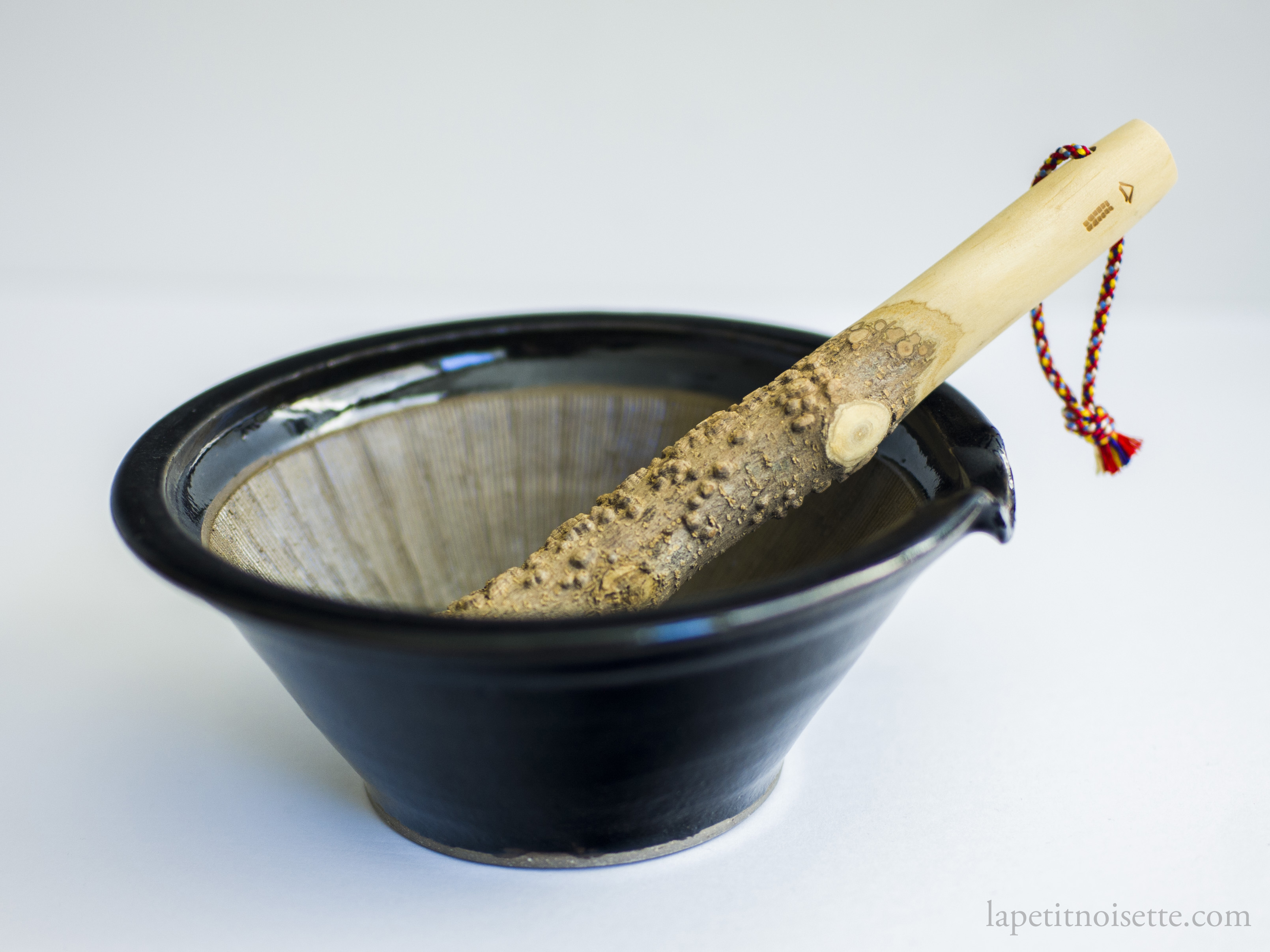
*In my opinion, with the increasing popularity of Japanese handmade clay pots in the western world, concepts like wabi-sabi and words like kannyu and kintsugi get thrown around so much due to tacky marketing that they almost sound like cheesy pickup lines at this point. Furthermore, most people do not take into account how these words might be used in a Japanese language context, which can sometimes be used very rarely and sparingly, meaning that certain words, such as wabi-sabi, umami and ikigai, are actually used in western culture to represent the Japanese way of thinking, even when the majority of everyday Japanese people are not even aware of what these words mean. They are just part of the big marketing trap masquerading as Japanese culture. Whilst I myself am no expert on these issues, one aspect of this I feel quite strongly about is the fact that most articles and websites that incorporate Japanese terminology into their writings only provide the phonetic spelling of the words without the hiragana or kanji of the words. This makes it much harder to learn more or research about the words in question because for people who are not fluent in Japanese, their only choice is to google the phonetic spelling of the words, which then only returns more English results on their search engine. For this very reason, I put a lot of effort in adding the kanji and hiragana of Japanese words I used to allow people to google them in Japanese and then use google translate to read Japanese articles if they so wish to.

Thank you for your fine review of the Kobo Kiln Japanese claypots. I have tried to find how to purchase one but failed. Could you provide any information on how to order them? Thank you.
The best place for you to buy them outside Japan is on Analogue life here: https://analoguelife.com/en/brands/azmaya
But it’s currently out of stock. You could send them an email asking them when it’ll be restocked. If you’re ever in Japan, you might find them in one of the Azmaya stalls.
Thank you so much for your reply and the information, I very much appreciate it!